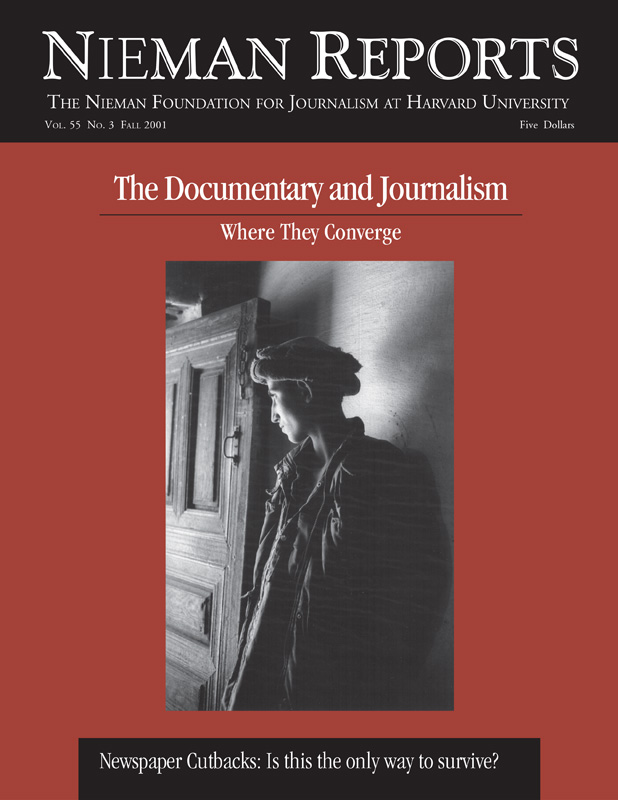Cutbacks. Lay-offs. Buyouts. Early retirement packages. Offered under different names and circumstances, the bottom-line objectives are similar: trim the staff to keep the enterprise afloat. Few journalistic homes have been spared cuts in staff during this economic slump, though newspapers, especially those belonging to the Knight Ridder chain, are experiencing deeper and more rancorous downsizings. We ask, in this issue, whether such cutbacks mark the correct path to long-term survival and what effect they have on the content and quality of the journalism being produced.
Thrity Umrigar, who writes for the Akron Beacon Journal, a Knight Ridder newspaper, takes us inside the newsroom during this year’s second round of staff cutbacks. She writes of its funereal atmosphere: “And, indeed, something had died—that naive and idealistic belief that the folks who ran newspaper companies realized that theirs was more than a business—it was a sacred charge.” Jim Naughton, president of The Poynter Institute who held numerous editor positions at The Philadelphia Inquirer (a Knight Ridder paper), tallies up the losses from cutbacks at his old paper and shares concern about how they jeopardize that paper’s high-quality journalism. Chuck Laszewski, a projects reporter at the St. Paul Pioneer Press (a Knight Ridder paper), reports that the corporate decisions to reduce the newshole size, cut sections, and remove bodies “to keep profit margins astonishingly high, won’t leave much of a newspaper for our readers to use.” Deborah Howell, Washington bureau chief for Newhouse Newspapers, describes Knight Ridder budget seminars she attended as an editor at the St. Paul paper. Though she knows more about how journalism is financed, “it’s not the reason I got into it. It’s not the reason I stay in it,” she writes. Working now for a privately held company, she reports that “I am lucky. I haven’t had to do anything this year that I think is wrong or long-range stupid….” William W. Sutton, Jr., a deputy managing editor of The News & Observer in Raleigh, North Carolina, urges corporate media leaders to keep the value of staff diversity in mind as cuts are considered.
Media analyst John Morton examines how newspaper owners react to the tug of Wall Street pressures and the consequences that decisions made today might have a few years down the road. McClatchy Company president and CEO Gary Pruitt explains why pleasing shareholders at his company has meant neither newshole nor staff cutbacks. And Jay Smith, president of Cox Newspapers, describes how a privately held company reacts to economic hard times with fresh approaches to news coverage. Michigan State journalism professor Stephen Lacy links changes in societal trends—public ownership, decline of newspaper competition, societal diversification, and growth of electronic media—to the financial decisions that confront newspaper executives today. Gilbert Cranberg, co-author of “Taking Stock: Journalism and the Publicly Traded Newspaper Company,” suggests workable ways that issues of journalistic quality can be become central to the decisions made by corporate directors. Joseph Bower, professor of business administration at Harvard Business School, describes the special strengths of newspapers and writes that decision-making by corporate leaders should never imperil newsgathering that lies at the heart of its enterprise’s unique mission within its community. “Credible news presented to attract readers is the golden goose,” he writes. “For that reason it should be at the core of any sensible economic decision-making about the newspaper business.”


